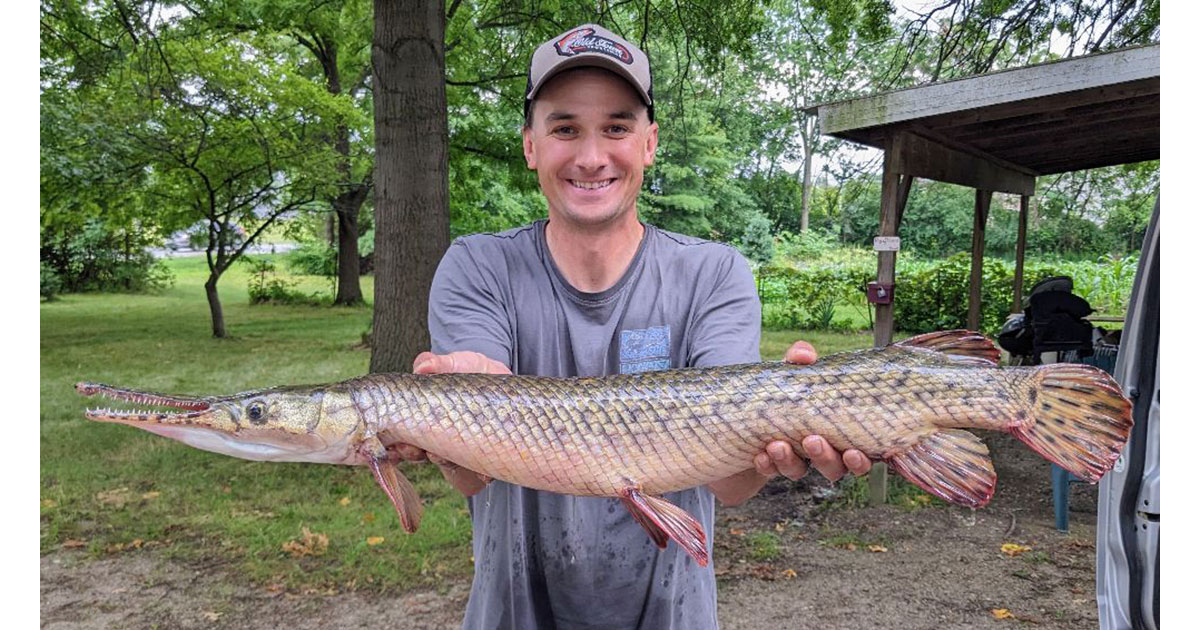- Details
IDNR Report
Beginning Aug. 19, hunters can apply for reserved hunts at on.IN.gov/reservedhunt, the one-stop information spot for the hunts.
The online method is the only way to apply for the hunts listed below. No late entries will be accepted. Applicants must possess a hunting license that’s valid for the hunt for which they apply.
Applications must be submitted by 11:59 p.m. ET on Sunday, Sept. 15. More specific hunt information for individual properties is available on the website.
Hunters will be selected through a random computerized drawing. An email will be sent to all applicants when draws have been completed. Applicants will be able to view draw results online within two weeks after the application period closes.
- Details
By Louie Stout
If you want the latest fish population about an Indiana lake, the DNR is providing a real-time website that will give you the same statistics fish researchers use.
You can search by lake, by fish species and by fish size on the state’s Fish Community Survey Results Dashboard.
The site, www.in.gov/dnr/fish-and-wildlife/fishing/fisheries-status-and-trends/, is based upon fisheries division status and trends surveys it conducts on various lakes each year. Those surveys don’t count every fish in a given lake, but do give a perspective of what’s there and how the lake has changed.
For example, if a bluegill angler wants to know how many ‘gills over 7 inches were captured in a specific lake, you’ll know that by using the site’s slide bar for fish size.
If you plug in smallmouth bass on the drop-down menu, you can see which lakes turned up the biggest population during DNR surveys.
You can also select glacial lakes, such as we have in the north, or reservoirs that are located mostly in central and southern Indiana.
Results are posted on the website the minute the survey stats are finalized.
Biologist Matt Linn said that the program works faster on a desktop, but is designed for mobile phones as well.
- Details
INDNR Report
 Fort Wayne resident Kyle Hammond with record spotted gar
Fort Wayne resident Kyle Hammond with record spotted gar
Fort Wayne resident Kyle Hammond caught a 9-pound, 11-ounce spotted gar on Rivir Lake in Chain O’Lakes State Park on July 11, besting the previous Indiana state record of a 6-pound, 12.5-ounce fish caught in 2017 from a gravel pit in Vermillion County.
Hammond was targeting gar from his kayak and landed the record catch within 20 minutes of starting to fish. He was using a spinning rod and reel with a white zoom fluke.
The Hoosier angler captured the entire catch on video as part of his hobby of actively posting his fishing trips on his YouTube channel, Indiana Kayak Fishing Journal. Hammond is also the current state record holder for shortnose gar, having caught that record fish in 2021.
Gar are usually found in shallow water around vegetation and have been seen in 71% of the Indiana DDNR fisheries biologists’ glacial lake surveys. Anglers who want to target the species or another Indiana sport fish can use DNR’s Fisheries Status & Trends dashboard to find lakes where they are most abundant.
To learn more about Chain O’Lakes State Park, please see on.IN.gov/chainolakes.
To learn more about the Indiana Record Fish program, please see on.IN.gov/recordfish.
Learn about purchasing a fishing license at on.IN.gov/fishinglicense.
- Details
IDNR Report
The Indiana DNR has confirmed cases of tularemia in wild rabbits in Tippecanoe County. Since April, more than 20 rabbits have been found dead in this area.
Tularemia is a disease that can affect wildlife, domestic animals, and humans. This disease is typically transmitted through tick or deerfly bites, direct contact with infected animals, or by exposure to contaminated water and air. Rabbits and rodents are most affected by this disease.
Signs of tularemia in rabbits can include lethargy, incoordination, staggering gaits, or spasms. Wildlife displaying signs of tularemia will usually die within two to 10 days. To help monitor this outbreak, DNR asks the public to report any rabbits found dead or displaying signs of tularemia at on.IN.gov/sickwildlife.
“Tularemia is present throughout North America,” said Michelle Benavidez Westrich, Fish & Wildlife health supervisor, “so it is not surprising to see mortality events such as this happen in our state.”
According to the U.S. Centers for Disease Control and Prevention, tularemia is a potentially serious disease in humans. However, infections in humans are not contagious and most infections can be treated with antibiotics. No humans or domestic animals have been affected by the current rabbit mortality event in Tippecanoe County. If you have questions or concerns about human health, contact your local health department for guidance. For questions about domestic animal health, contact your veterinarian.
You can take the following steps to avoid tularemia transmission:
- Always wear appropriate insect repellant when spending time outdoors.
- Check for ticks after spending time outdoors and remove any ticks promptly.
- Prevent your pets from interacting with dead or living wildlife.
- Avoid handling dead animals. If absolutely necessary, wear disposable gloves, double-bag the carcass, and dispose of it in a secure trash receptacle.
- Details
IDNR Report
Indiana’s Natural Resources Commission (NRC) has opened the final public comment periods for proposed changes to Indiana’s deer hunting and river otter trapping rules before members vote on final adoption.
Indiana DNR is proposing to open regulated otter trapping statewide but retain all other otter trapping regulations, such as the statewide quota, bag limits, reporting, and tagging for the regulated otter season. Indiana DNR values river otters and recognizes their value to the state, said DNR furbearer biologist Geriann Albers.
“We take the responsibility of balancing differing views around wildlife management seriously and are thoughtful about making small incremental changes for river otters,” she said.
Indiana DNR is confident the changes will not negatively impact river otter populations, which staff will continue to monitor.


